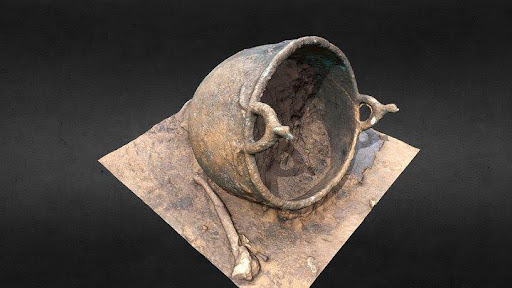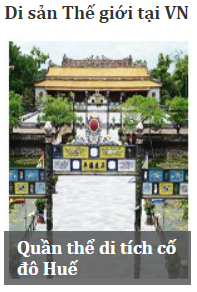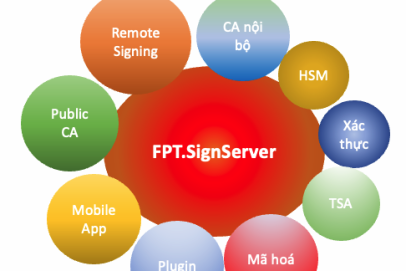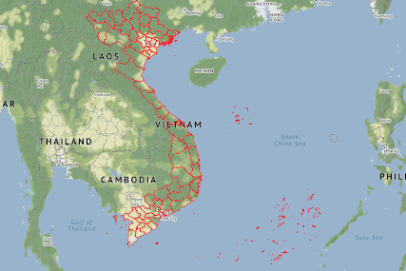Digital archive of cultural heritage
1. The need for digitization and preservation of cultural heritage
Cultural heritage and antiquities offer invaluable insights into humanity’s history, the development of civilizations, and the natural laws that govern our world. Thanks to relics and antiques that have survived to this day, even children can now learn about the Ice Age, the Jurassic Period, the Stone Age, and the Bronze Age. These artifacts also provide archaeologists, scientists, and historians with a window into ancient times. The excavation and study of heritage antiques are crucial not only for individual countries but also for humanity as a whole. Modern people have greatly benefited from the knowledge of the past, gaining insights into natural laws and the development of human civilization. Cultural heritages themselves not only carry thousands of years of knowledge, identity, history, and human values but are also beautiful works of art that captivate and inspire.
In today’s era of rapid technological advancement, new technologies enable extraordinary achievements such as space travel, supercomputers predicting weather and natural disasters, and AI applications across all aspects of life. Specifically, multidimensional imaging and digitization technologies, such as virtualization, 3D imaging, and virtual reality (VR), allow us to create highly intuitive digital surrogates. These technologies enable people to “touch” and explore artifacts in vivid and interactive ways, even without access to the physical originals. Modern technologies provide optimal solutions for preserving, promoting, and utilizing valuable digital resources. This approach aids in disseminating the profound human values left by our ancestors, helping people understand their origins and the world around them.
In recent decades, many governments and United Nations organizations have prioritized the digital archive of cultural heritage because of its significant benefits and humanitarian value. By digitizing heritage and making it accessible online, the global community can more easily access antiques. Researchers and students save considerable time and effort in studying cultural heritage. As a result, the exploitation and promotion of cultural values become widespread in the fastest and most intuitive way, especially in the digital age.
Furthermore, digitization ensures that future generations will inherit the most accurate and realistic digital surrogates of heritage. This is critical as heritage items will deteriorate over time despite the best preservation methods. Such deterioration can be caused by disasters such as fires, floods, and other natural calamities. Therefore, the importance of heritage digitization is undeniable. Modern digital technologies also necessitate attention to electronic storage solutions to preserve these digital cultural treasures.
In Vietnam
Vietnam, with its long-standing and diverse culture, boasts countless tangible and intangible cultural heritages tied to the history of its 54 ethnic groups. These cultural and artistic heritages are treasures of Vietnam, many of which are recognized by UNESCO as part of the heritage of humanity and hold significant economic potential. Efficient exploitation of these resources is necessary to facilitate the sustainable development of the country.


However, socio-economic and technological challenges, among others, have threatened the existence of many of these heritages. Intangible cultural heritage, in particular, is at risk due to its reliance on community activities. Some other heritages are protected but have not been effectively promoted or utilized for development needs, particularly in tourism and education.
The digitization of heritage in Vietnam began approximately 20 years ago. Recently, the Government has launched a specific program for heritage digitization for 2021-2030, aiming to digitize 100% of tangible and intangible cultural heritage, museums, and documentary heritage. This initiative requires contributions from the entire community.
Vietnam currently boasts over 40,000 relics of various types, with more than 3,100 relics holding national recognition. UNESCO has acknowledged 8 cultural and natural heritages, 14 intangible cultural heritages, and 7 documentary heritages within Vietnam. The country is also home to nearly 200 museums, housing nearly 4 million artifacts, including over 200 artifacts and groups recognized as national treasures. Additionally, Vietnam hosts more than 8,000 festive events. Despite these rich cultural assets, preservation and restoration of cultural values remain a challenge. The digitization of heritage in Vietnam began in 2004 when a group of young architects initiated a project to digitally restore the image of Hanoi Old Quarter in 3D. While initial progress has been made, widespread implementation and notable achievements are yet to be realized.
Since 2013, the Vietnam National Museum of History has been utilizing 3D virtual reality technology to showcase various topics such as “Vietnamese Buddhist cultural heritage,” “Vietnamese ancient lamps,” and “Vietnamese mascots,” among others. Subsequently, the museum expanded its efforts by establishing a regular 3D display system featuring topics like “Prehistoric Vietnam,” “Dong Son Culture,” “Ngo – Dinh – Early Le – Ly – Tran Dynasties,” and “Oc Eo – Phu Nam,” to name a few. This 3D display system allows visitors to virtually explore the exhibits with ease. With just a click on a computer or a tap on a smartphone screen, visitors can navigate through the display, immersing themselves in a multi-dimensional view of historical artifacts. They can closely examine every detail and pattern on the artifacts while listening to explanations supported by audio, creating a lively and engaging tour experience.
In December 2021, the Government issued Decision no.2026 approving the program for Vietnamese heritage digitization for the period 2021-2030. The Decision outlined several objectives, including ensuring that 100% of tangible, intangible cultural heritage, and documentary heritage are recognized by UNESCO. It also aims to digitize 100% of special national sites with applications on digital platforms, and prioritize the digitization of 100% of national treasures and heritages listed in the National Intangible Cultural Heritage List according to society’s needs. To achieve these goals, provinces and cities across the country have begun digitizing heritage sites. A notable example is the Hue Monuments Conservation Center, which has implemented an application for guided tours of the “Hue Monuments.” This application utilizes VR3D virtual reality technology, allowing visitors to scan QR codes to access artifact information. Visitors can interactively view artifacts through 3D models with 360-degree rotation. Additionally, the Center has utilized digital technology to restore the Imperial Citadel, and King Tu Duc’s Tomb has been digitally scanned in 3D and published on the Google Arts & Culture/Open Heritage platform.
However, in reality, there are still many difficulties facing heritage digitization efforts in Vietnam. Challenges include issues with funding, as well as a lack of cohesive digitization and storage technology platforms. Moreover, there has been no established standard for the storage and digitization of heritage using simulation technologies such as 3D and VR. Additionally, there is a notable absence of comprehensive Big Data on digital archive of cultural heritage, which is essential for effectively exploiting and promoting the value of the country’s digital cultural heritage resources. Moreover, copyright disputes have arisen due to the absence of specific regulations governing heritage digitization. Despite initial successes, challenges persist, including slower adaptation to technological advancements. In Vietnam, while the application of technology to heritage has made strides, there remains a significant gap compared to global standards. Resources for digitization are limited in both quality and quantity. Moreover, cultural heritage digitization experts require not only technological expertise but also deep cultural and historical knowledge, further complicating the process.
It’s evident that digitization for archiving digital cultural heritage is increasingly recognized as a crucial method of heritage preservation in today’s digital society. This approach significantly contributes to the management and dissemination of information, providing a foundation for academic research in historical studies. Moreover, it grants people from every corner of the country the opportunity to access heritage as if they were visiting it directly. The digitization of cultural heritage, furthermore, has been generating digital content that qualifies as works of art in its own right. The visual richness, spatial depth, dynamic movement, and contextual immersion of digital surrogates are capable of captivating the viewer’s senses. Hence, beyond its role in preserving and promoting the value of digital heritage, archive digitization also plays a pivotal role in safeguarding works of art for future generations.
2. Principles for widespread adoption of digital heritage
This section will concentrate on analyzing the obstacles and fostering the potential for the digitalization of cultural heritage and its widespread adoption across various fields. This can be accomplished through three core principles:
Empirical provenance: digital surrogates are easily used in science and cultural heritage studies. Transparent qualitative evaluation of their authenticity and reliability is essential.
Perpetual digital conservation: digital heritage can be used, stored and preserved with scientific methods that will guarantee their availability for future generations. The conservation plan must include capacity for contribution and stewardship from organizations and institutions worldwide.
Democratization of technology: digitization of heritage must allow those who study and care for our past to have easy and simple access to digital heritage along with related data.
Recent research breakthroughs in computer graphics, robotics, and machine vision have converged to make a new generation of robust digital tools for construction of digital surrogates possible, ensuring the above-mentioned principles.
2.1. Empirical provenance
A fundamental problem of the digital age is the qualitative assessment of digital surrogate reliability. Widespread adoption of digital surrogates by science in all fields, including the study of our cultural heritage, requires confidence that the data they represent is reliable. For a scholar to use a digital surrogate created by someone else in their work, they need assurance that the digital representation accurately reflects the physical original. If archaeologists are relying on virtual 3D models to study Paleolithic stone tools, they must be able to evaluate the likelihood that a feature on the model will also be on the original and vice versa.
The concept of “empirical provenance” can solve the above problems and encourage the use of digital heritage in scientific research. Within scientific discourse, the information collected, analyzed, and evaluated by scientists is traditionally called the ‘provenance’ of the research/inquiry. This provenance is carefully recorded in lab notebooks or similar records during the inquiry and then becomes an integral element of the published results. This provenance explains where the information came from and permits replication experiments, central to scientific practice, to confirm the information’s quality. Such provenance may include descriptions of equipment employed, mathematical and logical operations applied, controls, oversight operations, and any other process elements necessary to make both the inquiry and its results clear and transparent to scientific colleagues and the interested public. Widespread adoption of digital surrogates requires that they be able to pass such inquiry.
Empirical provenance for a digital surrogate is akin to what a lab notebook is for non-digital representations. Empirical provenance documents the journey of original, unaltered empirical evidence from initial data capture through the entire image generation process, culminating in its final form as a digital surrogate. Just as ‘real-world’ cultural material requires a provenance identifying what it is, establishing its ownership history, and proving its authenticity, digital surrogates require an empirical provenance to document the imaging practices employed to create them. That way, the user can decide for themselves whether to rely on the digital surrogate, or not.
The attributes of empirical provenance information for a given digital surrogate are dependent on the tools and methods employed to build it. For a digital photograph, the empirical provenance information would include XMP data such as the camera make and model, firmware version, shutter speed, and aperture; parameters used to convert the raw sensor data into an image like color temperature; and all editing operations performed in tools like Photoshop such as cropping, re-sizing, distortion correction, sharpening, etc. These editing operations can have a profound impact on image reliability and should be considered in documentation of empirical provenance attributes. For a 3D geometric model displaying photo-realistic surface texture and reflective material properties, the empirical provenance is complex. For these digital surrogates, complete process history accounts are required for the alignment of shape data acquired from different viewpoints, the registration of textural image data to geometry, the correction of geometric acquisition errors such as voids, smoothing in low signal to noise ratio situations, the effects of compressive data reduction, and other issues raised by the selected imaging method. In each case, whether digital photo or 3D model, the attributes including quantity of records, and ease, difficulty, or even possibility of empirical provenance collection result from the practices used to build the digital surrogate.
Only practices are regarded as attributes of digital surrogates. While these practices may not directly provide virtualized representations of heritage, they serve as a foundation for rigorous reliability evaluation. It should be noted that unlike the entertainment business where a good-looking image is the goal, scientific documentation requires that the material be represented reliably. If the empirical provenance, enabling assessment of reliability, is lacking, the digital representation may be enjoyed for visualization or entertainment purposes but not used as a digital surrogate for study and preservations purposes. Hence, if 3D and VR images and models of cultural heritage undergo processing that alters the original image without valid reason or specific documentation, they cannot be deemed digital surrogates of that cultural heritage. Instead, they may only be suitable for entertainment or commercial purposes.
As well as reliability, the combination of empirical provenance and automated digital processing, configured as needed, offers numerous advantages for organizing, communicating, and preserving digital knowledge. Once the process used to construct a digital surrogate is automated, an empirical provenance log describing the process can be automatically produced. In turn, the types of process history actions entered into this log can be mapped in the software and understood by trained specialists. Hence, it is imperative to meticulously consider the digitization process of heritage to establish the requisite information attributes, thereby ensuring that the digital surrogate can be trusted and widely utilized in scientific research and preservation efforts. An example of a robust semantic common language is offered by the International Council of Museums. A working group of ICOM’s Committee on Documentation (CIDOC) is now in the process of mapping Empirical Provenance structures into their Conceptual Reference Model (CRM), ISO standard 21127.
2.2. Perpetual digital conservation
Time and disasters are destroying original cultural heritage daily, and what has been lost is difficult to regain. This preservation requires the professional responsibility of every expert and the entire management apparatus involved in the digitization and preservation of cultural heritage. Unlike the preservation of original physical cultural heritage, which can be damaged or lost forever to humanity, digital heritage can be in more than one place at a time and in more than one form, potentially assuring its longevity despite the ephemeral nature of the media. This multiplicity of location and form is both the promise and the peril of digital heritage.
The importance of developing sensible plans to preserve our digital heritage cannot be minimized. We must answer key questions: Which data should we keep and how should we keep it? Digital heritage conservation involves making decisions about what should be preserved and restored and what should not. This process includes determining the criteria for these decisions. How is this data to be saved to ensure access in 5 years, 100 years or 1,000 years? In the next 100 years, we will go through dozens of generations of computers and storage media, and our digital data will need to be transferred from one generation to the next reliably. Finally, who will pay for all this?
We can think of digital heritage in terms of the value of what is being preserved, its viability, its availability to stakeholders, and its longevity. In essence, an ideal digital heritage repository would preserve archival-quality digital surrogate files in an openly accessible manner, ensuring their perpetual availability. This is the simplest definition of a trusted repository.
The US Library of Congress has proposed the following sustainability factors to preserve digital heritages:
Adoption: Wide adoption of a given digital format makes it less likely to become obsolete while reducing investment by archival institutions for its migration or emulation.
Transparency: Open to direct analysis without interpretation, transparency is characterized by self-evidence and substantive metadata. Therefore, if empirical provenance is sufficient and trustworthy, the digital surrogate of heritage stands a chance of enduring over time.
External dependencies: The less a media form is dependent on proprietary software/hardware, the better. If several digitization methodologies can yield similar results in terms of accuracy and productivity, the more open/less externally dependent method is recommended.
Impact of patents and copyrights: Intellectual property limitations bound to content can inhibit its archival capabilities in profound ways. Whenever possible, unambiguous, open licensing for content is recommended.
Technical protection mechanism: The selection of data security mechanisms for digital heritage warrants careful consideration since they can impact long-term preservation due to changes in format technology or storage machinery and media. Limitations imposed by digital rights management (DRM) or encryption, for example, can influence the preservation process.
Cultural heritage professionals must be adept at producing content that aligns with the criteria established by major international organizations. There exists a significant demand for practical digital heritage preservation methods. Collaboration between cultural heritage experts and digital technology experts is imperative to devise conservation strategies tailored to the unique characteristics of each region, country, and heritage site based on its significance.
2.3. Democratization of technology
Computational extraction of information from digital photographs can create digital surrogates that reliably describe the 2D and 3D shape, location, material, and reflection properties of our world. These new technologies include both single and multi-view reflection transformation imaging, the algorithmic extraction of surface feature drawings from reflection information, as well as photogrammetric breakthroughs that permit automatically calibrated and post-processed textured 3D geometric digital surrogates of objects and sites. Indeed, with ongoing technological advancements, new technologies equipped with robust image processing and post-processing capabilities may alter the digitized version compared to the original. It’s crucial to pay attention to this aspect to uphold the principle of empirical origin in digital heritage.
Applying new technologies and digitizing cultural heritage is undoubtedly essential. However, it is imperative to ensure that the technology used is appropriate, enabling researchers and interested individuals to easily access and effectively exploit digital heritage along with its related data.
3. Conclusion
The article delves into the prevalent trend of digitizing cultural heritage, which is gaining significant traction not only in Vietnam but also worldwide. It underscores the paramount importance of digitization in the preservation of cultural heritage. The creation of digital surrogates emerges as a crucial method for safeguarding cultural heritage for future generations. The digitization and archive of digital heritage is deemed indispensable for every nation and all of humanity, as they offer enhanced opportunities for researchers and enthusiasts to access and study precious cultural treasures, particularly those that are deteriorating over time or are challenging to access. Digital surrogates, developed and stored according to established principles, ensure preservation for posterity. Numerous studies worldwide have emphasized that the digitization and archive of digital heritage must adhere to core principles, namely empirical provenance, perpetual digital conservation, and democratization of technology. Only by adhering to these principles can we effectively apply digital heritage across various fields, saving time and effort in accessing and studying heritage. Moreover, following these principles helps ensure the permanent preservation of cultural heritage, mitigating the risks of deterioration, damage, and disappearance over time.
Creating digital heritage for widespread application across all fields necessitates adherence to the fundamental principles mentioned above and compliance with standards for digitization, access, and archive. I look forward to exploring these topics further in future articles.
| Exclusive article by FPT IS Expert
Author Ha Thi Hanh – Solution Design Expert, FPT IS |















